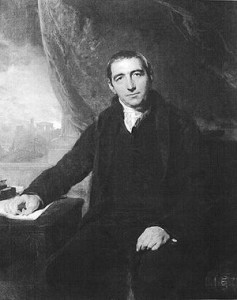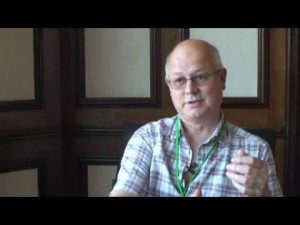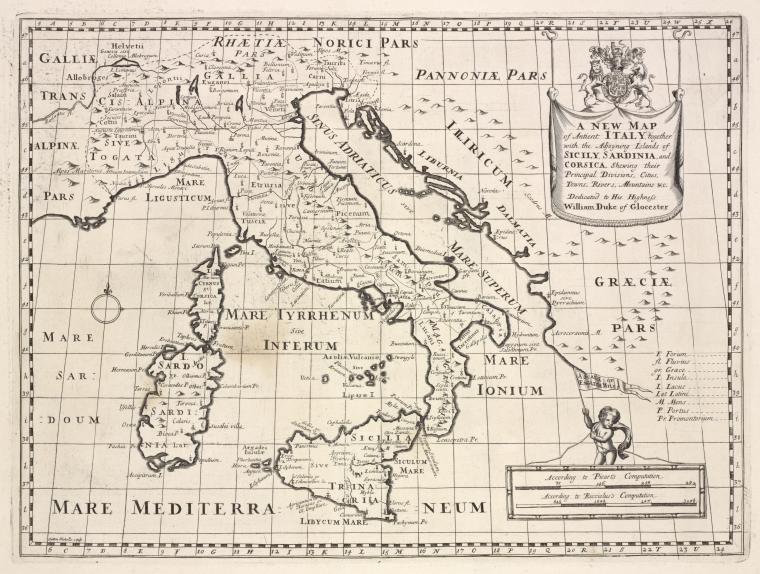Thomas Taylor
Atlantic Sea
The Atlantic Sea is a geographical term, used by classical writers, such as Plato and Aristotle. In the context of Atlantis studies, it is not to be  confused with what we now know as the Atlantic Ocean. For the ancient Greeks ‘Okeanos’ was the name of a great river that flowed around the known world.
confused with what we now know as the Atlantic Ocean. For the ancient Greeks ‘Okeanos’ was the name of a great river that flowed around the known world.
>The valuable Theoi.com website notes(c) “In the ancient Greek cosmogony the RIVER OKEANOS (Oceanus) was a great, fresh-water stream which encircled the flat disc of the earth. It was the source of all of the earth’s fresh-water–from the rivers and springs which drew their waters from it through subterranean aquifers to the clouds which dipped below the horizon to collect their moisture from its stream.”<
Plato never referred to Atlantis as being located in the Atlantic Ocean, instead, he placed it in the Atlantic Sea. In a recent book [1895], Carlos Bisceglia made one simple but highly pertinent comment – “If Plato had thought that Atlantis was an island located in what we today call the Atlantic Ocean, he would have written that his Atlantis was ‘in the Middle of Okeanos’.”
The first English translation of the Atlantis texts by Thomas Taylor at the beginning of the 19th century correctly translated the word as ‘Sea’, however, after that, most English translations used ‘Ocean’ including the most widely available offering from Atlantis sceptic Benjamin Jowett.
This claim of mistranslation is supported by Plato who noted that “in those days the Atlantic was navigable” (Tim. 24e), which clearly implies that in Plato’s time it was not. Additionally, Aristotle seemed to echo Plato when he wrote(a) that “outside the pillars of Heracles the sea is shallow owing to the mud, but calm, for it lies in a hollow.” This is not a description of the Atlantic that we know, which is not shallow, calm or lying in a hollow and which he also refers to as a sea, not an ocean. Both Plato and Aristotle seem to be describing a relatively small body of water. So, what sea were they referring to? The most popular suggestions so far are (1) The Western Basin of the Mediterranean, (2) The Tyrrhenian Sea or (3) The chotts of N.W. Africa.
Among others, Mário Saa a Portuguese writer identified the Western Mediterranean as Plato’s Atlantic Sea on a map in his book, Erridânia: geografia antiquíssima [1677]. A French website(b) supporting this identification has offered the map below. I also endorse this as a possible location for Plato’s Atlantic Sea in my book Joining the Dots.
(a) https://classics.mit.edu?Aristotle/meteorology.2.ii.html
(b) http://histoiresecrete.leforum.eu/t716-quelques-questions-se-poser-sur-le-Tim-e-Critias.htm (registration required)
(c) OCEANUS – Earth-Encircling River of Greek Mythology (theoi.com) *
Atlanticus
Atlanticus is the word used by Pedro Sarmiento de Gamboa to describe Atlantis. Thomas Taylor in his celebrated translation of Plato’s works has subtitled Critias as Atlanticus. In the 20th century The Critias Atlanticus was published, being a compilation(a) of seven translations of Plato’s Critias that includes the work of Thomas Taylor, Benjamin Jowett, Henry Davis, R. G. Bury, Lewis Spence, W.R.M. Lamb, John Alexander Stewart.
Taliaferro, Robert Catesby
Robert Catesby Taliaferro (1907-1989) was an American mathematician, philosopher and classical philologist. In his latter capacity he wrote a foreword to a 1944 reprint of Thomas Taylor‘s translation of Timaeus and Critias [1569]. From it Frank Joseph has quoted [802.140] the following; “it appears to me to be as least as well attested as any other narration in any ancient historian. Indeed, he [Plato] who proclaims that ‘truth is the source of every good both to gods and men,’ and the whole of whose works consist in detecting error and exploring certainty, can never be supposed to have wilfully deceived mankind by publishing an extravagant romance as matter of fact, with all the precision of historical detail.”
*However, shortly after I posted the above, I was contacted by Thorwald C. Franke, who kindly pointed out that Frank Joseph’s quotation was from Thomas Taylor’s own introduction not Taliaferro’s later addition in 1944. This is just another example of sloppy research by Joseph.*
Pateneit
Pateneit is the name of the Egyptian priest that Solon spoke to in Sais, according to Proclus (5th cent. AD) in his Commentary on Plato’s Timaeus (Vol I). He adds that he also spoke to two other priests, Ochlapi at Heliopolis and Ethimon at Sebbynetus. However, Plutarch (2nd cent. AD) gives the names of the priests at Sais and Heliopolis as Sonchis and Psenophis respectively. It is frustrating that we no longer have access to the sources used by Plutarch and Proclus, but they do seem to enhance the provenance of Plato’s account.
The Thomas Taylor translation of Proclus’ commentary can be read online(a)(b).
(a) https://archive.org/details/proclusontimaeus01procuoft
(b) https://archive.org/details/proclusontimaeus02procuoft
Tyrrhenian Sea
>The Tyrrhenian Sea according to Massimo Pittau was named after the Sardinian Nuragics, since in ancient Greek ‘Tyrrenoi’ means ‘builders of towers’. As noted elsewhere, Sardinia was an important part of the Atlantean domain.<
Plato clearly states that Atlantis controlled Europe as far as Tyrrhenia (Critias 114c), which implies that they dominated the southern half of the Italian peninsula. The Sea is surrounded by the islands of Corsica, Sardinia, Sicily and the Lipari Islands as well as continental Europe in the form of the Italian mainland. Not only does it contain islands with an adjacent continent (see Timaeus 24e). It is also accessed through the straits of Messina and Sicily, both of which have been identified as locations for the Pillars of Heracles before Eratosthenes applied that appellation to the region of Gibraltar.
Timaeus 24e-25a as translated by Bury reads “there lay an island which was larger than Libya and Asia together; and it was possible for the travellers of that time to cross from it to the other islands, and from the islands to the whole of the continent over against them which encompasses that veritable ocean (pontos=sea). For all that we have here, lying within the mouth of which we speak, is evidently a haven having a narrow entrance; but that yonder is a real ocean (pelagos=sea), and the land surrounding it may most rightly be called, in the fullest and truest sense, a continent.” Similarly, Lee and Jowett have  misleadingly translated both pontos and pelagos as ‘ocean’, while the earliest English translation by Thomas Taylor correctly renders them as ‘sea’. Modern translators such as Joseph Warren Wells and a Greek commentator George Sarantitis are both quite happy to agree with Taylor’s translation. However, Peter Kalkavage translates pontos as ‘sea’ but pelagos as ‘ocean’!
misleadingly translated both pontos and pelagos as ‘ocean’, while the earliest English translation by Thomas Taylor correctly renders them as ‘sea’. Modern translators such as Joseph Warren Wells and a Greek commentator George Sarantitis are both quite happy to agree with Taylor’s translation. However, Peter Kalkavage translates pontos as ‘sea’ but pelagos as ‘ocean’!
For me, there is a very strong case to be made for identifying the Tyrrhenian Sea as the ‘sea’ referred to by Plato in the passage quoted above. However, it was probably F.Butavand, in 1925, who first proposed the Tyrrhenian as the sea described by Plato in his La Veritable Histoire de L’Atlantide[205] .
Pushing the boat out a little further, I note that Rome is situated in Central Italy and by tradition was founded by the twins Romulus and Remus!
A 1700 map of the Tyrrhenian Sea is available online.
‘Tyrrhenia’ is sometimes used as a geological term to describe a sunken landmass in the Western Mediterranean Basin(b)(c).
(a) (link broken) *
The Critias Atlanticus
The Critias Atlanticus is a compilation(a) of seven translations of Plato’s Critias that includes the work of Thomas Taylor, Benjamin Jowett, Henry Davis, R. G. Bury, Lewis Spence, W.R.M. Lamb, and John Alexander Stewart.
(a) https://www.hiddenmysteries.com/xcart/Critias-Atlanticus.html
Sable vestments
‘Sable vestments’ is Robert Bury’s and W.R.M. Lamb‘s translation of the Greek kuanon stolen in Critias 120b which describes the ceremonies of the Atlantean rulers when they meet. At first sight it appeared to me that this might be a reference to a need for fur robes implying a cold northern climate, compatible with the habitat of the sable.
Atlantean rulers when they meet. At first sight it appeared to me that this might be a reference to a need for fur robes implying a cold northern climate, compatible with the habitat of the sable.
Anton Mifsud advised me that the Greek text more correctly translates as ‘dark-blue garments’ confirming both Jowett and Thomas Taylor, who translate kuanos as ‘azure’. Other translations on offer are ‘dark blue‘ (Lee), ‘steel blue‘ (Wells) and ‘purple‘ (David Horan). It is more commonly referred to nowadays as ‘Tyrian purple’.
>Into this mix we must throw the fact that the ancient Greeks had no word for ‘blue’. They were not alone as “There isn’t a single term for “blue” in Russian. The two phrases “galoboy” and “sini,” which are typically translated as “light blue” and “dark blue,” are used instead. Nevertheless, for Russians, these words refer to two entirely distinct colors rather than two variations of the same color.”(a)<
If this reference to azure robes was actually recounted to Solon, and not just a Platonic embellishment, it places Atlantis in the 2nd millennium BC, which was when the earliest reference to the production of ‘Tyrian dye’ by the Phoenicians is recorded (See: Murex). The use of purple and indigo clothing was a fashion statement by the political and religious elite that lasted for at least three millennia, which can be seen on the coronation portrait of Britain’s King George VI.
English Translations (L)
English Translations of Plato’s Timaeus and Critias have been freely available since 1793 when Thomas Taylor produced his translation.
In 1804 Taylor published the first English translation of the entire Platonic corpus. In 1871, Benjamin Jowett produced the most commonly quoted version of the Atlantis Dialogues, principally because his work is now out of copyright. Henry Davis produced a translation of Critias in the 19th century and John Alexander Stewart also offered a translation of Critias early in the 20th century.
1925 saw W.R.M. Lamb publish a translation of some of Plato’s works and today his rendering of both Timaeus and Critias is used by the Perseus Digital Library(a). In 1929, Lewis Spence included a composite version of the Atlantis texts in The History of Atlantis, using the English translations of Jowett and Archer-Hind for Timaeus and the French translations of Jolibois and Negris for Critias. Rev. R. G. Bury gave us what was arguably the best translation of the Dialogues (Loeb Classical Library, 1929) and is included at the beginning of this book. Francis M. Cornford (1874-1943) published his Timaeus (Bobbs-Merrill, 1937)
Sir Desmond Lee produced a new English translation in 1972 (Penguin)
Professor Diskin Clay delivered an acclaimed translation of Critias (Hackett Publishing, 1997). Professor Donald J. Zeyl offered a new translation of Timaeus (Hackett Publishing, 2000). Dr. Peter Kalkavage published a highly regarded translation of Timaeus (Focus Philosophical Library, 2001).
In 2008, Robin Waterfield offered a new translation of Critias and Timaeus[0922] as well as a revision of Desmond Lee’s translation of them by Thomas Kjeller Johansen.
Taylor, Thomas
 Thomas Taylor (1758-1835) was the first to publish, in English, the complete works of Plato and Aristotle, in 1804. His publication was the completion of valuable work begun by the unfortunate Floyer Sydenham. Taylor is regarded by some as having had a valuable insight into the mind of Plato, which made his translations superior to many others. In 2009, a five-volume, first-edition set went on sale for $22,000.
Thomas Taylor (1758-1835) was the first to publish, in English, the complete works of Plato and Aristotle, in 1804. His publication was the completion of valuable work begun by the unfortunate Floyer Sydenham. Taylor is regarded by some as having had a valuable insight into the mind of Plato, which made his translations superior to many others. In 2009, a five-volume, first-edition set went on sale for $22,000.
Although Taylor’s work was generally well received, a subsequent translation by Rev. Henry Davis scathingly referred to Taylor’s work as “uncouth, obscure, unEnglish and often extremely erroneous.” Nevertheless, Madame Blavatsky and other theosophists were very happy with Taylor’s translation.
A reprint [644] of Taylor’s 1810 translation of Timaeus and Critias has been made available by Kessinger Publishing. Unfortunately, it does not include the Stephanus pagination references, which makes navigation a little more difficult. However, an extensive website dealing with the work of Gerald Massey(b) includes Taylor’s translation of Plato’s Critias and Timaeus with pagination.
>In Taylor’s complete edition of Plato’s works from 1804, there is also a preface by him to the dialogue Critias , which is of some interest from an Atlantological point of view. Thorwald C. Franke notes [1255.347], that in it “Taylor shows understanding that Atlantis finds no credence, since the 9,000 years would contradict the commonly accepted age of the world. Nevertheless, Plato’s Atlantis tradition is as good history as that of others ancient historians too, says Taylor, because it would be Plato’sTotally contrary to the ethos of truth to deceive humanity with such a story. Taylor rejects localizations of Atlantis in America and Africa since the island of Atlantis is said to have sunk into the sea. “(a)<
(a) Thomas Taylor – Atlantisforschung.de (atlantisforschung-de.translate.goog)
(b) Introduction to the Works of Massey (archive.org) (see introduction Pt.5)
Gilbert, Adrian
 Adrian Gilbert (1949- ) is the well-respected author of a number of books[326] and television documentaries on what are considered ‘fringe’ subjects. He is probably best known for The Mayan Prophecies[0327] co-authored with Maurice Cotterell as well as The Orion Mystery co-authored with Robert Bauval. He has also studied connections between the Bible and astrology[0328].
Adrian Gilbert (1949- ) is the well-respected author of a number of books[326] and television documentaries on what are considered ‘fringe’ subjects. He is probably best known for The Mayan Prophecies[0327] co-authored with Maurice Cotterell as well as The Orion Mystery co-authored with Robert Bauval. He has also studied connections between the Bible and astrology[0328].
Influenced by the ‘prophecies’ of Edgar Cayce he believes that Atlantis, or at least part of it, had existed in the West Indies near Bimini and that following its final inundation around 10,500 BC he claims that refugees fled to the Yucatan Peninsula where they developed the Mayan civilisation.
>In The Mayan Prophecies, Gilbert and Cottrell, in an attempt to justify their claim that Plato was referring to an American Atlantis, have offered a flawed translation of Timaeus 24-25 [p166], using the word ‘ocean’ where the Greek text uses the words ‘pontos’ or ‘pelagos’ which both mean sea not ocean. The first English translation of Plato’s text by Thomas Taylor correctly used the word sea for ‘pontos’ and ‘pelagos’, including the term ‘Atlantic Sea’.
For the Greeks the word ‘ocean’ (okeanos) only referred to the huge sea that flowed around the known world.
Leaving all that aside we should note that Herodotus, who flourished after Solon and before Plato, was quite clear that there were only three continents known to the Greeks; Europe, Asia and Libya(b) in fact, prior to Herodotus only two land masses were considered continents, Europe and Asia, with Libya sometimes considered part of Asia. So when Plato does use the word ‘continent’ (Tim. 24e-25a, Crit. 111a) we can reasonably conclude that he was referring to one of these land masses, and more than likely to either Europe or Libya (North Africa) as Atlantis was to the west of Athens and Egypt, ruling out Asia.<
Gilbert’s principal interest is the Mayan calendar and the fact that it will reset to zero at midnight on the 21st of December 2012. This coincides with the earlier views of the American archaeologist, Michael D. Coe, who wrote about the significance of 2012 as early as 1966 in his book, The Maya. However, he has suggested three different dates between Dec. 24 2011 and Jan 11 2013 in various editions of his book(a).
It is claimed that this date will coincide with catastrophic events that occur cyclically every 5,000 years. Many authors, such as Patrick Geryl have speculated on the nature of the calamities that this date may bring.
(a) https://rationalwiki.org/wiki/2012_apocalypse
(b) The Histories, Book 4. v.42 *



